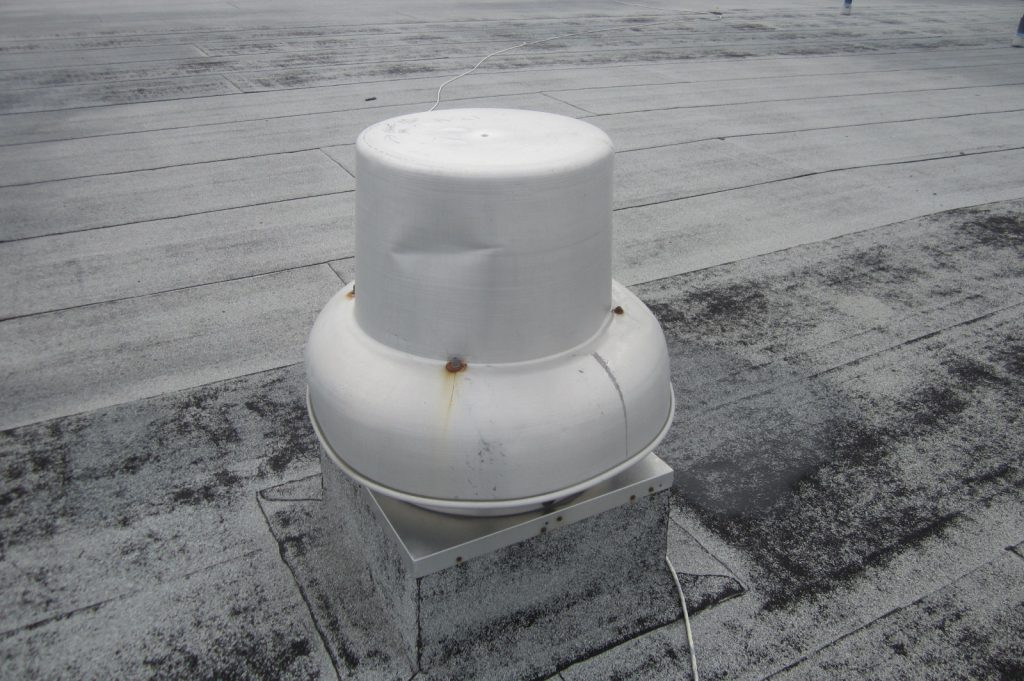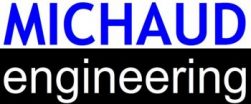Total Cost of Ownership
June 19, 2019

“If it ain’t broke, don’t fix it”. We have all heard that saying before, and there is a lot of truth to it. Sometimes messing around with equipment or systems that are working satisfactorily can have adverse effects and cause them to run worse, rather than better. On the other hand, sometimes we overlook problems or costs that could be improved with the right attention. How do we know the difference?
Pictured above is a roof fan. It isn’t new, obviously, but it may not be that old either. Sure, it has a dent in the housing, but that probably doesn’t impact it’s performance significantly. In fact, visually, this fan doesn’t really indicate any current or impending problems. We can make some educated guesses as to it’s performance and reliability: the aged roof surrounding it may help us determine an approximate age for the fan, the rusted screw heads may indicated that it doesn’t get serviced regularly, and if we were standing next to it we could listen to it and observe its operation to see if it is vibrating excessively or sounds like a belt may be worn.
However, it could, in fact, be well maintained despite the visual cues from the photo. It could be that the motor and belts were recently replaced and the fan itself was properly balanced and it is running smoothly. It could have years of more reliable operation ahead. We simply cannot tell just from this photo.
So how do we determine the current condition of this equipment (or any equipment, for that matter), and more importantly, how do we determine when the right time to replace it will be? For that, we need to dig into the equipment history.
What “equipment history” you ask? Where do we find this information? Hopefully the owner of this fan has a maintenance department that uses some sort of maintenance system – preferably a computerized maintenance management system, but even manual ones (as rare as they are now) can be effective if properly updated. You don’t necessarily need a huge maintenance budget to properly track your preventive, predictive, and reactive service calls, but you DO need to be diligent and consistent about it. The information gathered there is a gold mine and should be treated as such.
Too often companies focus all of their efforts on making sure PM’s get done, or that service calls are managed in a timely fashion – and they are certainly important, but don’t forget to log the results of those activities. Properly logged data about the age of the equipment, the number of times a particular piece of equipment has been serviced, what was serviced, and how much it cost can be very important in deciding whether it is time to replace the motor in that fan or to get a new fan altogether. If you did the research on this particular fan and found that the motor had been replaced several times already, maybe there are other problems with the fan that make it a poor choice to keep investing money into it. Perhaps the motor mounts are cracked from years of vibration and it will continue to chew up motors. Perhaps the fan is not constructed with the right materials for the service it is doing. Alternatively, maybe this fan has been super reliable so far and has only needed routing lubrication and belt replacements. The equipment history is vital in determining what to do next.
If you are a maintenance or facilities manager, can you pick out a piece of equipment at random from your building’s equipment list and tell from its equipment history whether it is coming up for replacement or is still serviceable? If not, why not? If your maintenance and equipment history records aren’t what they should be it would be a great idea to get them in order or hire a company to help you do so. The investment will pay itself back several fold in both reduced operations and maintenance costs as well as improved reliability and up-time.
Do you have ideas on other topics for this feature? Post them in the comments on LinkedIn, Instagram, Twitter or Facebook.
